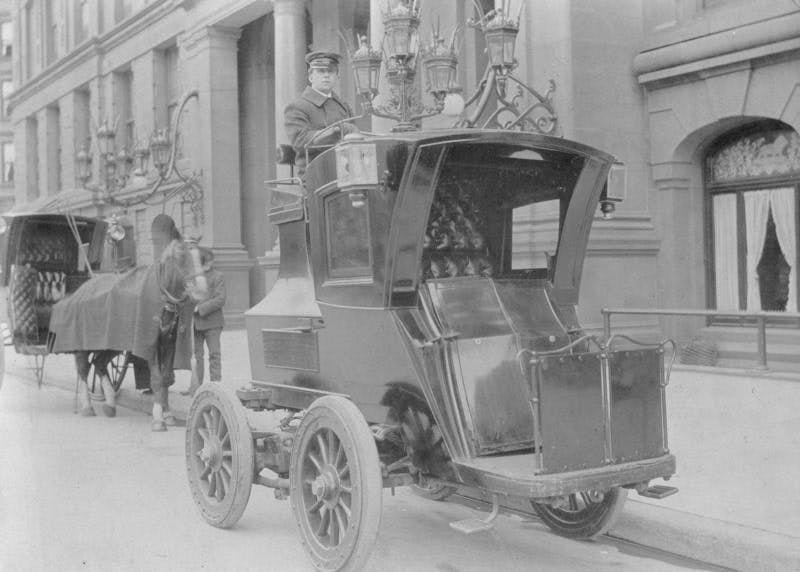Media | Articles
When electric cabs ruled New York’s roads
May of 1899: The United States’ first ever speeding ticket has just been issued to New York cab driver Jacob German.
The Brooklyn Daily Eagle reports that German is “the first man arrested for running an automobile too fast” after being clocked at 12 mph on Lexington Avenue. He is pursued and arrested by a fast-pedaling Bicycle Roundsman. Both German and his employers at the Electric Vehicle Company (of 1683 Broadway) are said to be “shocked” (no pun intended) when he is locked up in the East 22nd Street police station.
Really, the surprise is that New York’s electric taxi drivers haven’t sooner been pinched for exceeding the eight-mph speed limit. The cabs have been commonplace in Manhattan for two years and hundreds of them ply their trade on the streets of the Big Apple.
The vehicles are all locally made—first by the Electric Carriage and Wagon Company and subsequently by the Electric Vehicle Company, after a takeover.
The cabs are modified Electrobats, from 1894, originally designed and built by Philadelphia chemist Pedro Salom and his inventor partner Henry Morris. Their first Elecrobat is a rugged 4400-pound vehicle powered by a ship motor and constructed to take on the city’s unmade roads. The taxis are modeled on the Electrobat II—a far lighter 1800-pound machine.
Marketplace
Buy and sell classics with confidence
The vehicles built in New York begin to see service from 1897 and, within their first month, Salom and Morris claim their 13 taxis have served over 1000 passengers and travelled 2000 miles.
As is still the way today, range is an issue for the cabs, but this is overcome with a battery swap system at the company’s workshop in a former ice skating rink on Broadway. Here the taxis roll in and have their 1300-pound battery packs removed by a hydraulic piston, then hauled away for charging, while another pack is put in its place. It’s quite some engineering task, but it’s effective.
The Manhattan cabs prove such a success that the business expands to neighboring New Jersey, Boston, Chicago and Newport and the company is, albeit briefly, the biggest auto manufacturer in the United States, producing around 2000 cars in total.
By 1901, however, it’s all falling apart. The cab operations outside of the New York have been mismanaged, there’s a campaign against electric vehicles led by Horseless Age magazine whose editor is an “autoelectrophobe” and promotes the internal combustion engine. Oldsmobile takes the lead in terms of vehicle production and, despite efforts to stay afloat by purchasing other electric car makers including Columbia and Riker, the company collapses into bankruptcy in 1907.
Almost 100 years will pass before electrified taxis hit New York again when the city begins to encourage cab companies to use hybrid vehicles such as the Toyota Prius and Ford Escape. Only in 2019 is the fully electric Tesla Model 3 approved by the New York Taxi and Limousine Commission.
What goes around comes around. Eventually.












